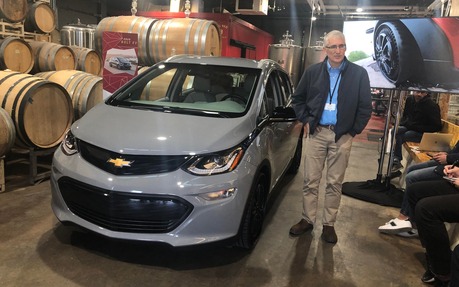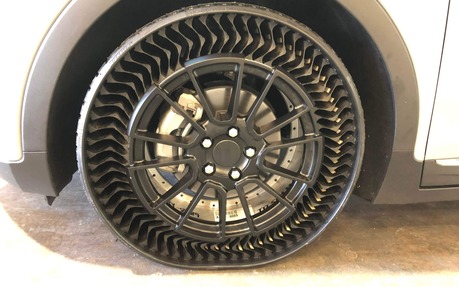Michelin’s Airless Tire is Getting More and More Serious
While car tires have changed very little over the past few decades, some manufacturers are taking big steps to revolutionize the way we drive.
Back in June, Michelin hosted the world premiere of its innovative new Uptis airless tire in Montreal with the promise of eliminating flats for good.
- Also: How to Tell if Your Tires are Still in Good Condition
- Also: Continental Develops a Self-Inflating Tire
A few months later, The Car Guide sat down with Steve Cron, senior development engineer at Michelin, to learn more about the design and aspirations of this tire.

No More Flats, No More Maintenance
Using a new composite-based technology, the Uptis works like a regular tire. The only difference is that the air chamber is replaced with rubber bands that preserve the tire’s structural integrity, even under the weight of a vehicle driving at high speeds.
The No. 1 benefit of the Uptis, obviously, is the ability to get rid of flat tires once and for all. But there’s more to it.
“Safety is our priority and this tire addresses a problem that has endured for too long,” Cron says. “We also see huge potential in the fact that this tire requires no maintenance. For a car-sharing fleet, this can be a tremendous asset because no user wants to spend time checking the tire pressure.”
During the world premiere in June, Michelin president Florent Menegaux even suggested that driverless cars in the future could use a tire like the Uptis.
“Autonomous vehicles cannot be bothered by flat tires and downtime. Our new tire will solve all that,” he said at the time.
Mother Nature Likes it, Too
According to Eric Vinesse, R&D director at Michelin, another benefit of the airless tire is reduced waste and pollution. He pointed to the 200 million tires that must be discarded every year due to flats or other problems.
While that number may seem exagerated, the introduction of puncture-proof tires that don’t require any pressure regulation could indeed improve tire longevity.
Theoretically, these tires could also be used more than once, thus limiting their environmental footprint, even though they demand more resources to build than conventional tires.
“We could add a new tread to the base of the tire when the original one has worn out,” explains Cron.
And since the tread is similar, developing airless winter tires wouldn’t be a problem, either.

Deja vu
Michelin believes the future of the tire industry depends on concepts like chamberless tires.
“It’s much safer and it can be financially beneficial, too,” says Cron, who previously worked on the Tweel, another Michelin innovation from a decade ago that never made it to production. “The Tweel demanded a certain compromise in terms of road noise.”
In contrast, the new Uptis is much quieter and more suitable for daily driving.
Cron admits that fuel economy and handling may be slightly affected by the use of airless tires, which are heavier than conventional tires.
While promising, this new technology still has a few hurdles to clear. Michelin plans to wait about five years to turn it into a mainstream product and has teamed up with General Motors to achieve that goal.
In the meantime, watch out for flat tires!
